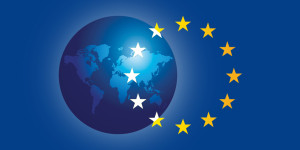Brussels, 28 February 2017
On 1 March the newly established European Reference Networks (ERNs) will start their work.
ERNs are unique and innovative cross-border cooperation platforms between specialists for the diagnosis and treatment of rare or low prevalence complex diseases.
Speaking to doctors, patients and the media at the University hospital in Leuven Belgium, Vytenis Andriukaitis, European Commissioner for Health and Food Safety, said: “Today, on European Rare Disease Day, I am particularly pleased to launch the European Reference Networks. As a medical doctor, I have too often been witness to tragic stories from patients with rare or complex diseases who were left in the dark, sometimes unable to find an accurate diagnosis and receive a treatment. I have also seen my colleagues struggling to help because they lack information and opportunities to network. These Networks will connect the considerable EU knowledge and expertise that is currently scattered between countries, making this initiative a tangible illustration of the added value of EU-collaboration. I am very confident that ERNs can light the way for rare disease patients, leading them to potentially life-saving and life-changing breakthroughs”.
24 thematic ERNs, gathering over 900 highly specialised healthcare units from 26 countries, will begin working together on a wide range of issues, from bone disorders to haematological diseases, from paediatric cancer to immunodeficiency. Joining up of EU’s best expertise on this scale should benefit every year thousands of patients with diseases requiring a particular concentration of highly specialised healthcare in medical domains where the expertise is rare.
The challenge of rare diseases
Rare diseases are those that affect no more than 5 in 10 000 people. Taken together, between 6 000 and 8 000 rare diseases affect the daily lives of around 30 million people in the EU – many of whom are children. Rare and complex diseases can cause chronic health problems and many of them are life-threatening. For example, there are almost 200 different types of rare cancers alone and each year more than half a million people in Europe are diagnosed with one.
The impact of such diseases on sufferers, their families and carers is substantial and patients often go undiagnosed due to lack of scientific and medical knowledge or to difficulty in accessing expertise. The fragmentation of knowledge about rare diseases and the small numbers of patients affected by a single disease marks it out as an area of particular EU-added value.
ERNs in brief
European Reference Networks (ERNs) are virtual networks bringing together healthcare providers across Europe to tackle complex or rare medical conditions that require highly specialised treatment and a concentration of knowledge and resources. They are being set up under the EU Directive on Patients’ Rights in Healthcare (2011/24/EU), which also makes it easier for patients to access information on healthcare and thus increase their treatment options.
In practice, ERNs will develop new innovative care models, eHealth tools, medical solutions and devices. They will boost research through large clinical studies and contribute to the development of new pharmaceuticals, and they will lead to economies of scale and ensure a more efficient use of costly resources, which will have a positive impact on the sustainability of national healthcare systems, and for tens of thousands of patients in the EU suffering from rare and/or complex diseases and conditions.
The ERNs will be supported by European cross-border telemedicine tools, and can benefit from a range of EU funding mechanisms such as the “Health Programme”, the “Connecting Europe Facility” and the EU research programme “Horizon 2020”.
For more information
MEMO: Questions and Answers about European Reference Networks
Follow us on Twitter: @EU_Health



